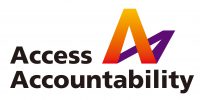Making sure your consent procedure is correct and up-to-date before conducting research is essential to good human rights documentation practice. Victims of human rights violations need to have a clear understanding of what the research is for, what will happen to their information, and what their rights are during and after the interview. Doing so provides necessary protection for both the interviewer’s organization and the research participant. It may also be important if the data is to be shared with third parties in the future. Here are 9 things to consider when developing an informed consent procedure.
1. Identity of documenter and organization
Interviewers and documenters should identify themselves and the organizations they work for. Explain the role of your organization and information about any affiliations the organization may have, such as with a government, religious group, legal body or international organization. This will allow the participant to assess the credibility of the documenter and the organization they represent.
2. Purpose of documentation
Tell the participant the purpose of the interview. Explain clearly the procedure for obtaining the testimony and how the information will be used. This will allow the participant to understand what they will be required to share with the documenter. In the future, if the testimony is to be used in a different way from the original purpose, updated informed consent should be obtained.
3. Access to information
Tell the participant who will be using and accessing the information (including any third parties), as well as how the information will be stored. Also be sure to inform the participant of how the information will be used: whether in organization reports, investigation or judicial processes, advocacy materials, in United Nations submissions or in other ways.
4. Risks and benefits of participation
The interviewee must understand potential risks and benefits of participating in the interview. The interviewer should create a comfortable, non-threatening environment and allow the interviewee to have time to understand and ask questions about any risks to taking part. The positive contributions the participants will make to the research should also be made clear.
5. Voluntariness
The participants should provide all information voluntarily. In situations where financial compensation is given for participation (eg. the cost of transport or a meal), take care to assess whether this serves as an indirect form of enforcement.
The participants should know they can refuse to participate in the interview or stop at any time during the interview. If they choose not to participate or stop during the interview, this should not affect any financial compensation they have been promised. Nor should it affect their relationship with the interviewing organization.
6. Follow-up information
Participants should be made aware that they can contact the documenter or the organization after the interview to ask any questions they may have regarding the use of the information, changes to the information they submitted, or withdrawal of consent to participate.
7. Confidentiality
Inform participants about any ways the information may be shared with or used by third parties. Ensure compliance with any national data protection laws, and inform the participants about how personally identifiable data (PID), such as names, is collected and stored.
8. Methods of Obtaining Informed Consent
Informed consent can be obtained by oral consent or written consent (a signed consent form), depending on what is appropriate for the local context. When you obtain written consent, make sure the participants have enough time to read and understand the content, and to ask any questions they may have. Oral consent may be preferable for subjects who are illiterate. Oral consent could be recorded either on video or audio, with the permission of the participants. You should ensure the signed documents are kept in a safe place such as an office safe or lockable cabinet.
9. Interviewing Specific Groups
When interviewing individuals who have not reached the age of a legal adult in that country, informed consent should be obtained from a legally authorized representative or parent.
These are 9 things to keep in mind when developing an informed consent procedure. Please remember, this list should be tailored or expanded depending on your context and the circumstances of your participants. If possible, seek the advice of a legal professional on your consent procedure and ensure to revise it on a regular basis to make any necessary changes. For more detailed information on designing a consent form and a consent procedure, see the links to additional resources.
You can watch the video for this article here.
References
OHCHR, “Human Rights Indicators: A Guide to Measurement and Implementation” https://www.ohchr.org/Documents/Publications/Human_rights_indicators_en.pdf
PILPG, HRD Toolkit Consortium. 2016. “Broadly Accepted Practices in Human Rights Documentation: Informed Consent.” (currently unavailable online)
Additional Resources
Federica D’ Alessandra, Sander Couch. n.d. “Handbook on Civil Society Documentation of Serious Human Rights Violations.” Public International Law & Policy Group (PILPG). https://www.vu.nl/nl/Images/PILPG_Handbook_on_Civil_Society_Documentation_of_Serious_Human_Rights_Violations_Sept_2016_tcm289-785328.pdf.
Karyn Kaplan. 2009. “Human Rights Documentation and Advocacy: A Guide for Organizations of People Who Use Drugs.” Open society institute. https://www.opensocietyfoundations.org/publications/human-rights-documentation-and-advocacy-guide-organizations-people-who-use-drugs.
United Kingdom: foreign and commonwealth office. 2014. “International Protocol on the Documentation and Investigation of Sexual Violence in Conflict.” https://www.gov.uk/government/uploads/system/uploads/attachment_data/file/319054/PSVI_protocol_web.pdf.
Last Updated: September 13, 2018.
